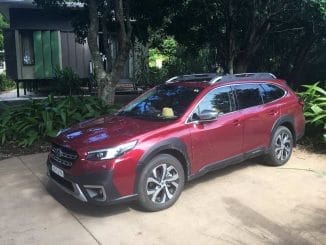With its spectacular landscapes, sun-drenched beaches and wildlife-filled national parks, Australia is made for road-tripping. For many travellers to the country, exploring from behind the wheel is all part of the experience.
But driving in Australia offers some unique challenges for visitors, particularly when it comes to the long distances involved. In this guide, we’ll share with you everything you need to know before embarking on a road trip Down Under.
Be realistic about distances
There’s no denying it, Australia is BIG and the distances between its cities are huge! So if you’re planning on driving between any of the capital cities, don’t underestimate the time it will take, particularly if you want to do some sightseeing along the way. When booking your accommodation through a holiday rental site such as Rentola Australia, which allows you to search for and compare available properties, always overestimate the time it will take to get there so you don’t end up missing your reservation.
While Sydney to Canberra is doable in a day, including a few stops, Melbourne to Sydney should be driven over the course of a week. The driving distance between Brisbane and Cairns is more than 1,600 kilometres, so give yourself at least two weeks to make the journey worth it.
Remember, many of Australia’s “highways” are actually one-lane roads, so you won’t always be travelling at 100+km/h. If you’re coming from Europe, this might come as a surprise and it may take much longer to get to your destination than you expect.
Share the driving
Because of the long distances between destinations, it’s a good idea to share the driving with someone else. This means planning ahead and only attempting to drive so far each day.
Ideally, try and swap drivers every two or three hours, with regular stops where you can stretch your legs or caffeinate. If you’re feeling fatigued, don’t get behind the wheel – the consequences just aren’t worth it!
Plan your petrol stops
On the East Coast of Australia, you’ll find petrol stations in most towns, so refuelling is not an issue. But if you’re planning on driving across the Nullarbor Plain between Adelaide and Perth, the petrol stations are few and far between.
Any road trip through the Outback should include careful planning, ensuring you have enough fuel to get to the next petrol station. In some cases, you may need to carry extra petrol with you. Also, be aware that gas prices in the Outback can be much higher than in more built-up areas, so budget accordingly.
Park before dark
While Australia’s wildlife is one of its biggest draw cards for international visitors, it can also play havoc on the roads after dark. Kangaroos and wallabies are particularly troublesome as they get stunned by headlights and often jump out in front of vehicles.
Not only do you want to avoid creating roadkill but also any damage to your vehicle (big roos can leave big dents!). So once dusk begins to set in, call it a day and pull over.
If you do have to drive at night and a kangaroo or wallaby suddenly jumps in front of the vehicle, it’s recommended that you continue driving straight ahead. Some of the worst car accidents in Australia are a result of drivers trying to swerve their vehicles at high speed to avoid hitting wildlife.
Know the mechanical basics
If you do break down on an Australian highway, it could be a long way to the closest mechanic. So it’s a good idea to prepare your vehicle and be able to top up your oil, coolant and water, as that could be enough to get you to the next town.
Before embarking on any road trip in Australia, book your vehicle in for a service and do any repairs suggested by the mechanic. Having a spare tyre (and knowing how to change one) is also essential, particularly if you’re planning on doing a lot of off-roading.
Invest in roadside assistance
Even if your vehicle is in perfect condition before you start your Australian road trip, there’s a chance that it could break down in the middle of nowhere. Purchasing a roadside assistance plan for a year can often be cheaper than a single call-out to a remote area.
If you’re renting a car, then roadside assistance is often included in the plan or you will have the option to purchase it separately. Most insurers also have roadside assistance available, either included in their annual policies or as a discounted extra.
Expect poor or no reception
While driving in remote areas of Australia, you may have limited or no reception. So pre-load maps and routes into your sat-nav before you depart so that you will still be able to get to your destination if you have no signal.
It’s also a good idea to download your road trip playlist if you want to listen to music throughout your journey.









